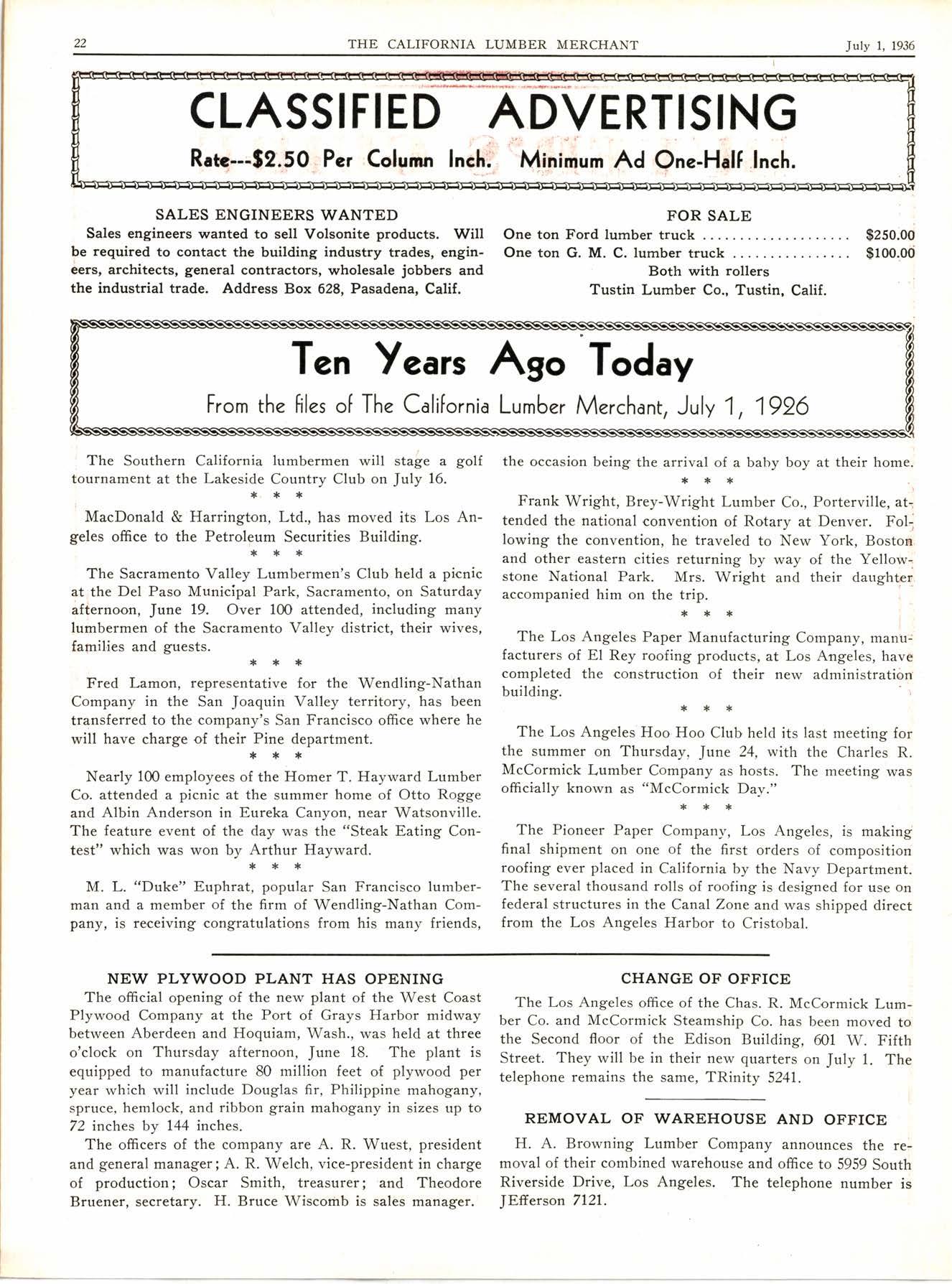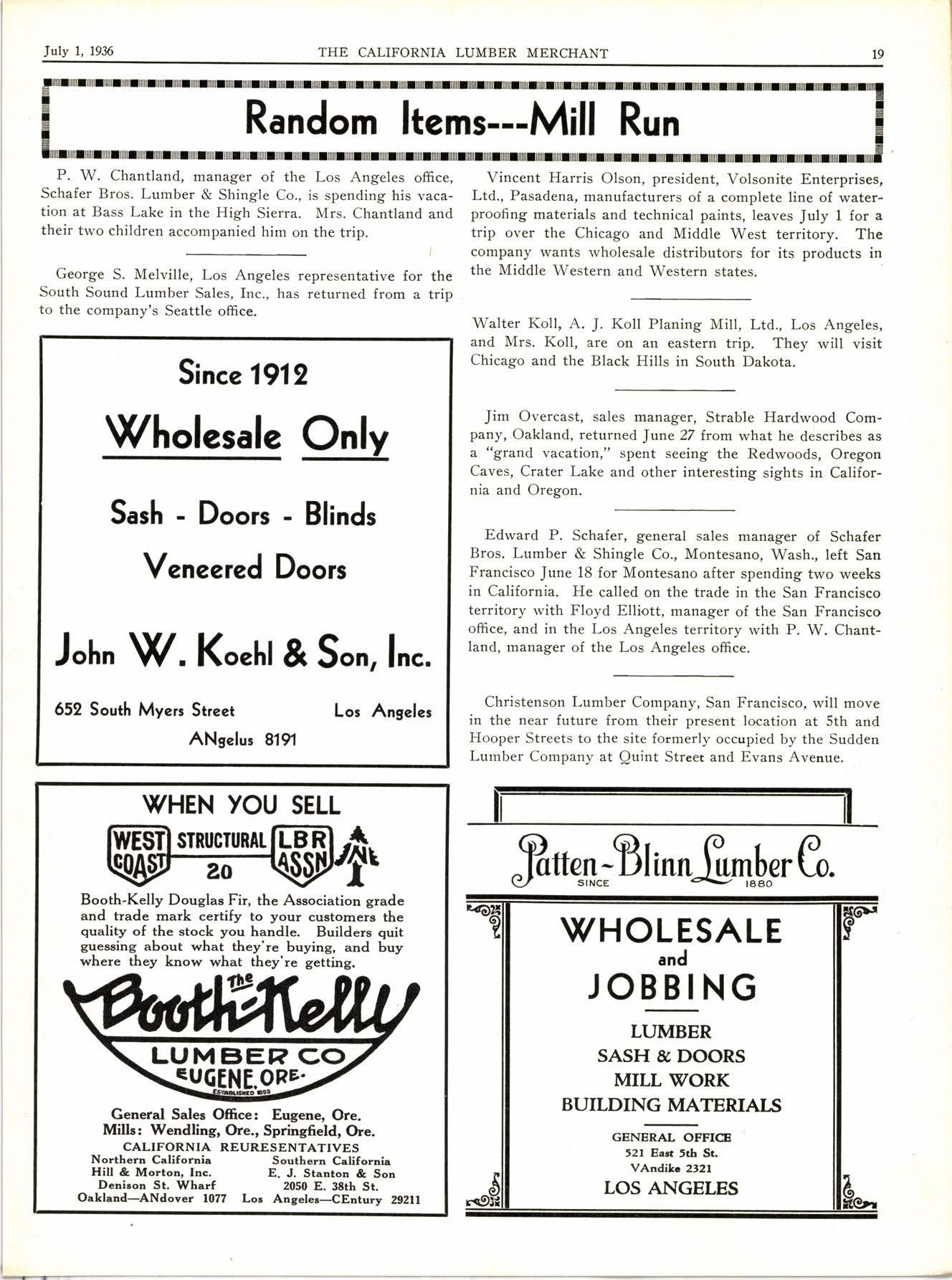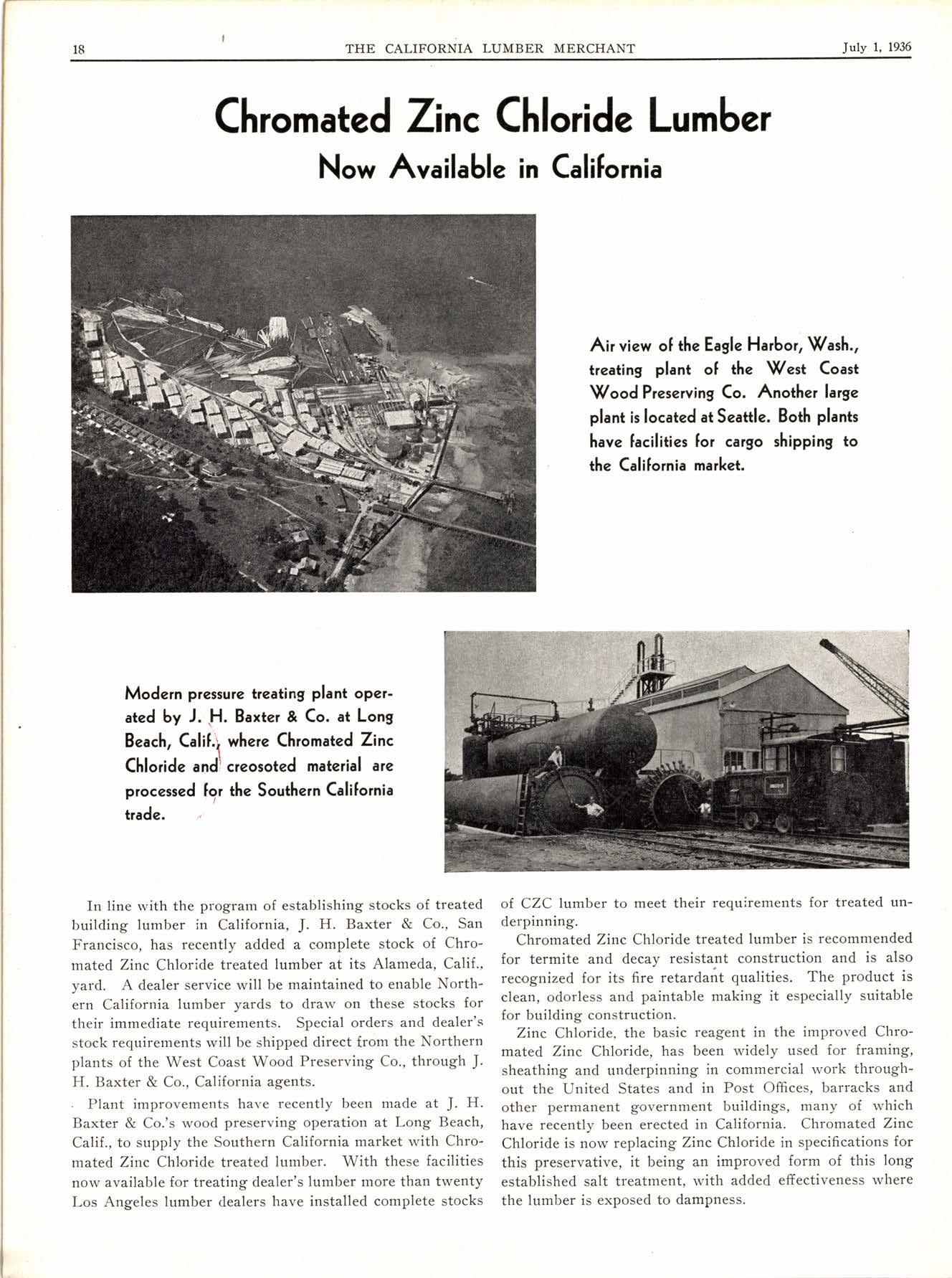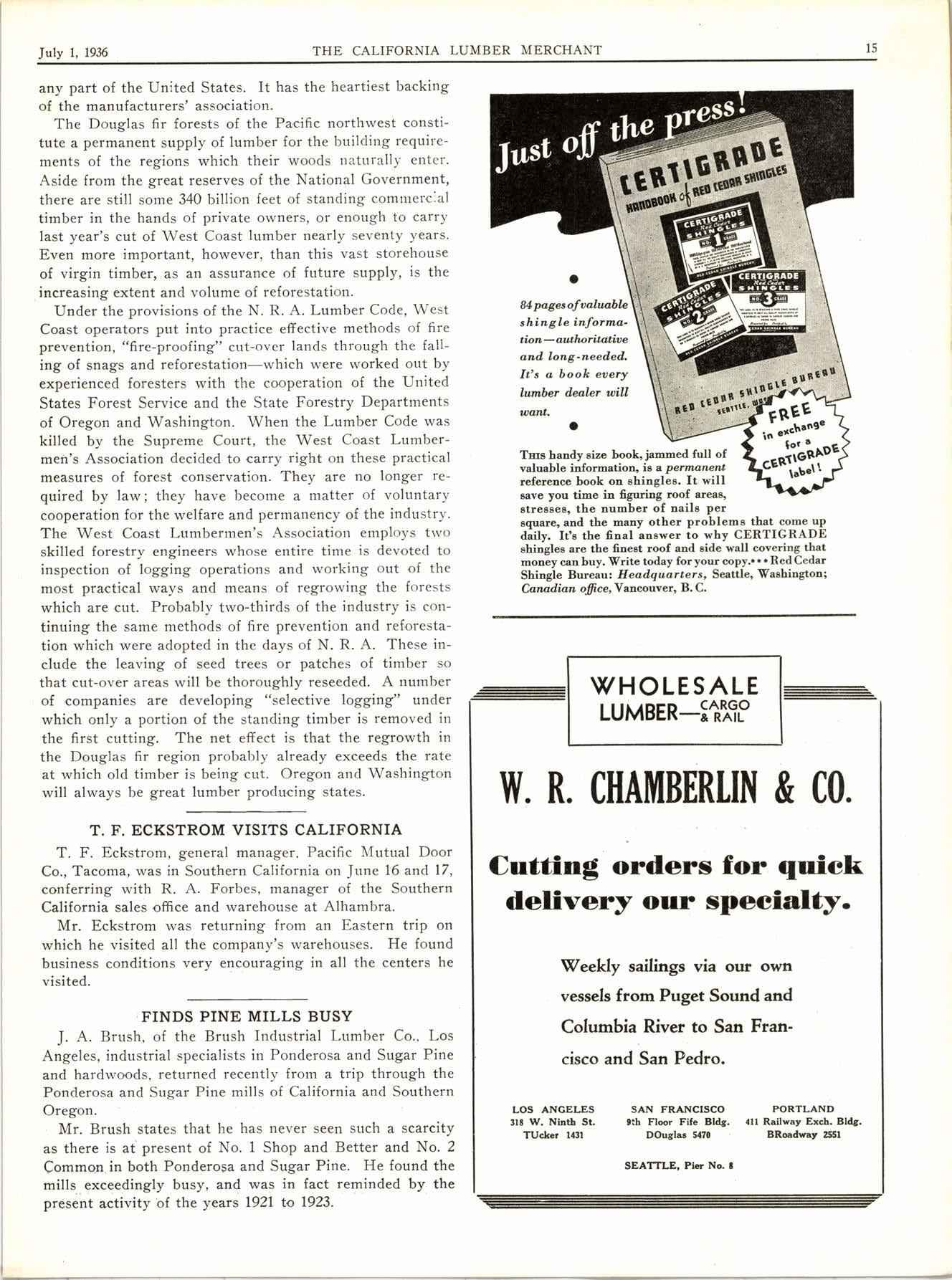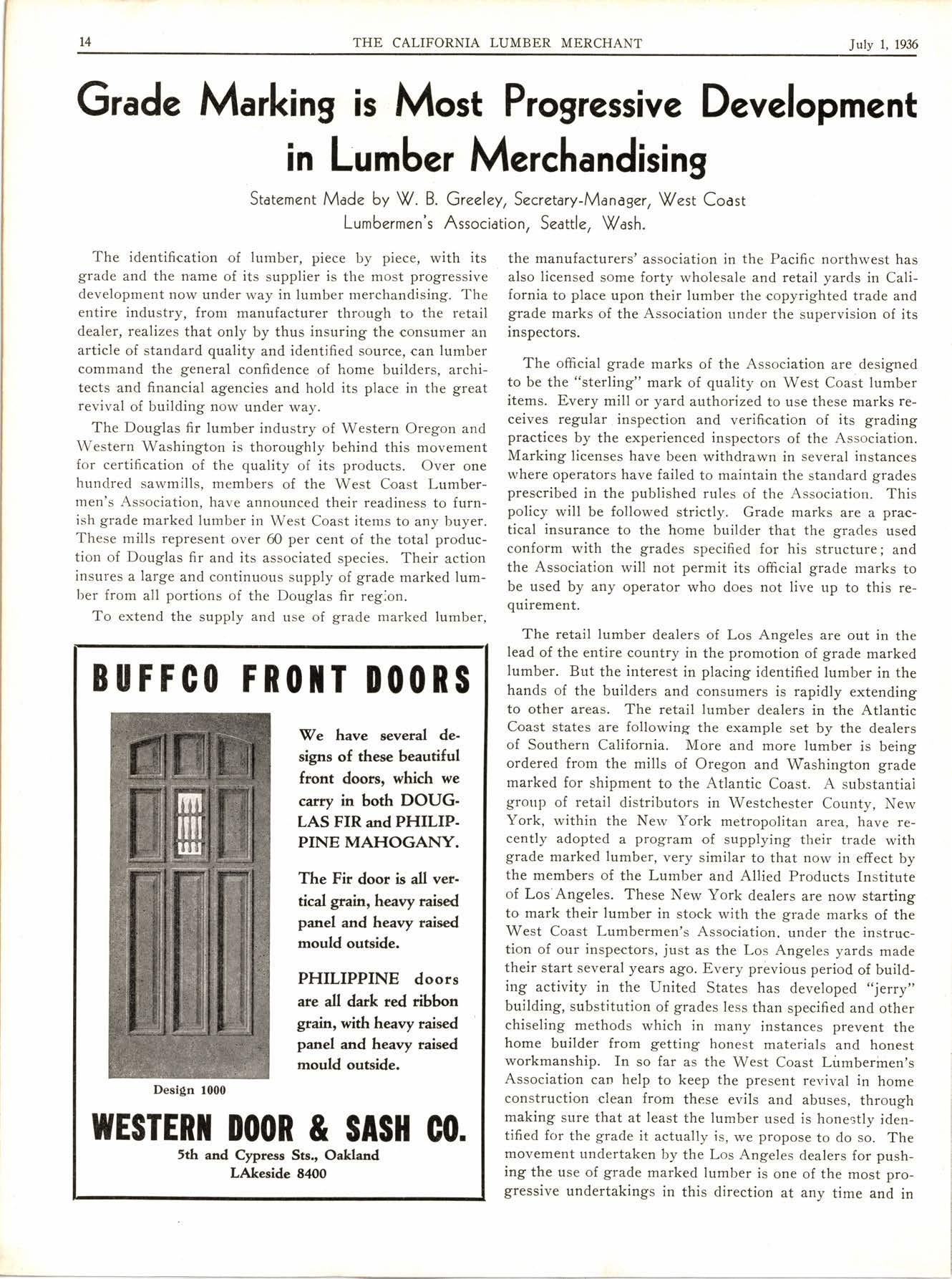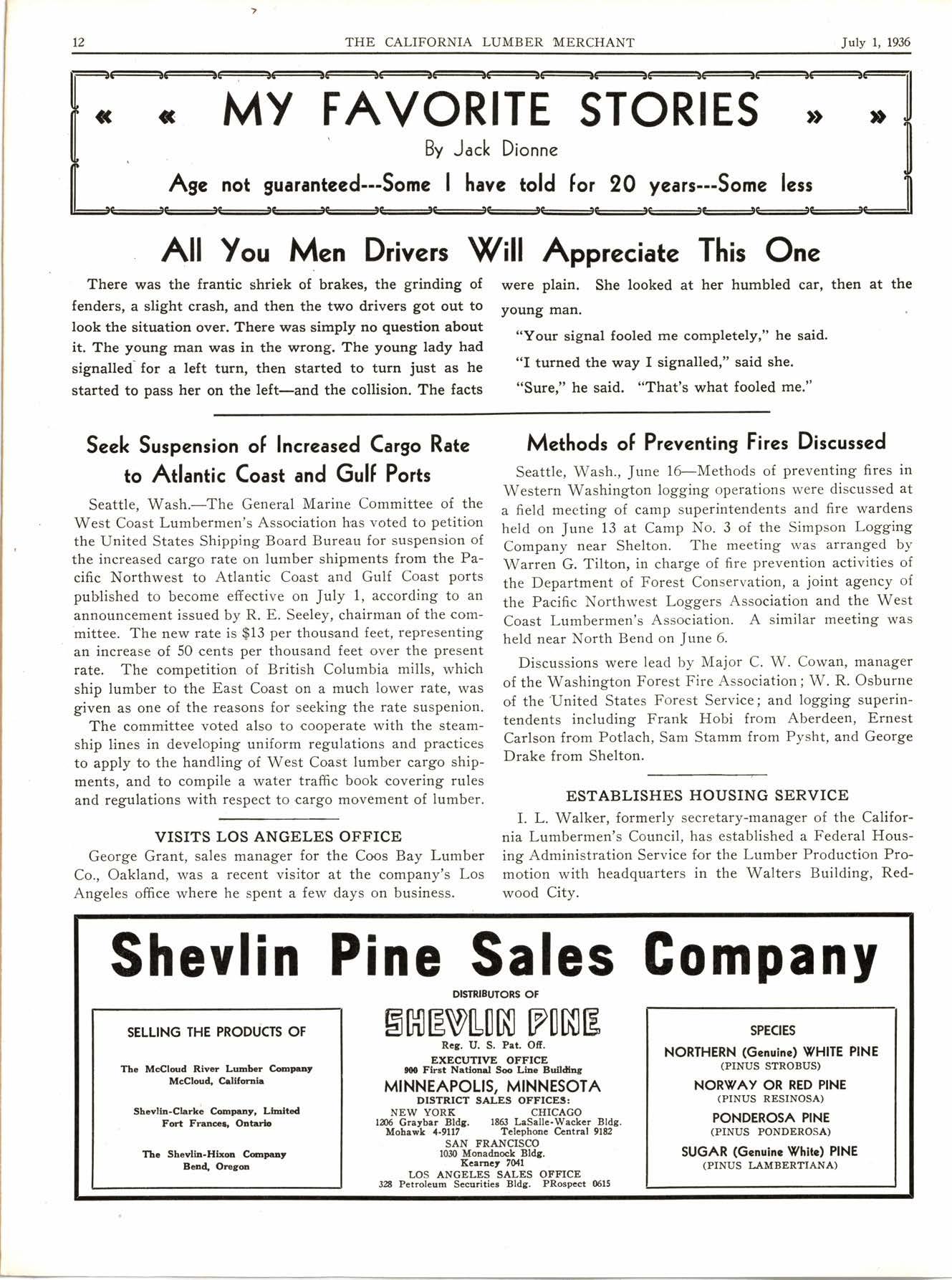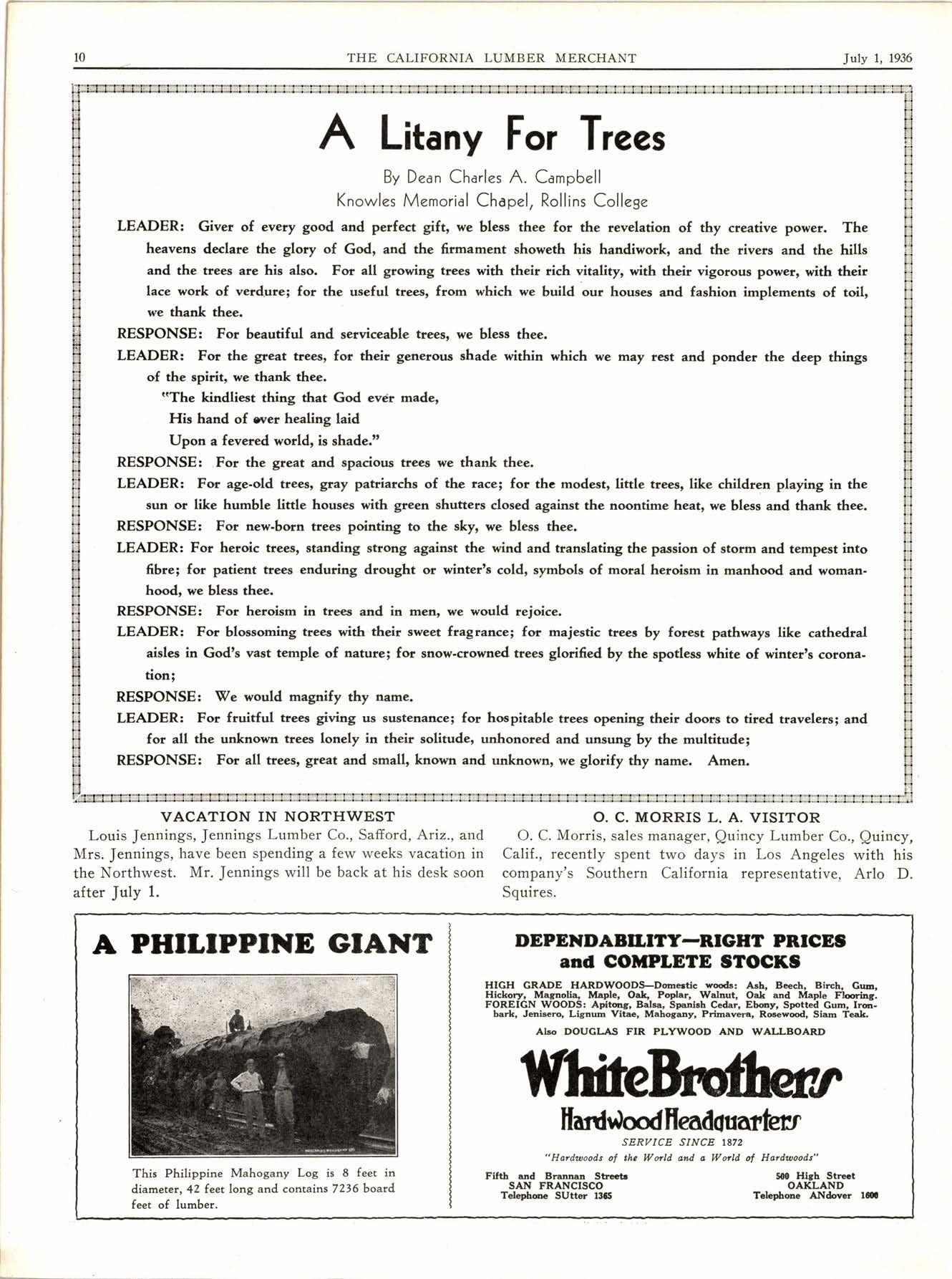
4 minute read
LUMBER SATES
lose, to the modern chemist, is far more wonderful than gold. It is the fiber that forms the cell walls of all plants and trees, but wood and cotton are its chief source of supply. Wood and cotton, in the hands of the chemist, have become a partnership of apparently almost infinite opportunity. The limit of the use of cellulose is probably not even in sight. Yet see the wonders that have already been done.
***
Rayon is the product of wood and cotton. Do you know how large the Rayon industry has become? A small matter of ONE BILLION POUNDS IN 1935. So fine has its manufacture b6come under reseach and experiment that it is now'setting standards for silk From cellulose, from cotton and wood come X-ray and other photographic films. About one-half of all women's shoes, and a large percentage of men's shoes are no longer bound with nails, pegs, or thread. They are sealed with cellulose cement, which is rapidly revolutionizing shoe manufacture. The polish for tinting women's finger nails; shoe buckles; eyelets; lace tips; the coating on the heels of women's shoes that prevents scuffing; these and scores of other things can be traced right back to the forest or the cotton patch; for they are cellulose.
Enough of it has been made in the last ten years to wrap up the world, and its use is still in its.infancy.
And then, of course, ah"* t" Lrood nr"""rving, which is likewise a product of the chemist. Naturally. Wood preserving started with railroad ties, in the efiort to make them long-lived and rot-resisting. It spread to lumber and tim. bers for many building purposes, and its activities are sPreading' * :* {<
The chemist found that rot was NOT a natural thing; that it was caused by fungi and parasitical things, and he proceeded to develop cheap chemical treatments for killing them. Blue stain used to cost the lumber industry ten million dollars a year. It is no longer a problem, thanks to the chemist. One and one-half billion board feet of lumber and timbers were chemically treated in the United States in 1934' :B * ,*
To make lumber rot-proof, termite-proof, and in addition fire-proof, is the final aim of the lumber chemist. The first two are already a success. The third is inevitable. Within the next decade such lumber should be available and in general use.
The safety glass in
r."t:";;bile;
the shell of the fountain pen you write with; the bindings of school books; the washable window shades we all use; the toilet things on your wife's dressing table; the motion picture film that furnishes entertainment for the millions; many of the upholstery fabrics you use; explosives used for a thousand kinds of blasting; these and thousands of other things in daily use are made from the cellulose that is made from wood. It is entirely possible that a tree may furnish the cellulose from which is made the blasting powder later used to remove its own stump in clearing the land. Some circle ! *{<rf
Wood used to be wood, but since the chemist got hold of it, it would be a wise tree that would know its own products. And think of cellophane, that new product that the whole world is using, made of cellulose, from wood and cotton.
These things already ;;J are HERE. There is no conjecture about them. But a great tide of wood-made wonders seems to be in the offing. This very day I read in a newspaper of experiments that are being made on the Pacific Coast for creating Diesel motor fuel from wood, and the statement was definitely made that a line of trucks are today being operated experimentally on Diesel fuel made from POWDERED WOOD. Amazing predictions concerning the low cost of such fuel per mile are hazarded. It shows what marvels of the immediate future we may reasonablY exPect' {< * *
Sho nuff, friends ! Isn't there really something of a romance in the story of what the chemist, and research, have done for wood?
Redwood Picture Shown at Many Meetings Appointed Los Angeles Manager
The California Redwood Association's sound moving picture "California Giants" has been in big demand and is proving very popular with Southern California groups. During the month of June it was exhibited at the following meetings:
June 9, Lumbermen's Post, American Legion, Los Angeles; June 10, (morning) Long Beach Breakfast Club(noon) Cirgonian Club, Los Angeles-(evening) Native Sons of the Golden West, Los Angeles; June 11, (noon) Kiwanis Club, Claremont-(evening) Better Business Bureau, Long Beach; June 16, (morning) E. K. Wood Lumber Co., Los Angeles-(evening)-Masonic Lodge, Santa Ana; June 17, Rotary Club, Culver City; June 18, Exchange Club, Alhambra; June 22, (alternoon) Women's Club, Los Angeles-(evening) Parent Teachers Association, Alhambra; June 23, Rotary Club, Redondo Beach; Jane 24, Los Angeles retail lumber dealers, Los Angeles; lune 25, (noon) Kiwanis Club, San Gabriel-(evening) Los Angeles retail lumber dealers, Los Angeles; June 29, Elks Club, Alhambra; June 30, Kiwanis Club, Whittier.
Sunday afternoons lrom 2:00 to 4:00 p.m., the picture is being shown in the California State Building, Exposition Park, Los Angeles. A number of bookings to show the picture during July before other groups in Southern California have already been made.
Howard Page, who has been representing the Coos Bay Lumber Co. in the San Joaquin Valley territory, has been appointed manager of the company's Los Angeles office. He succeeds Stuart Smith who has resigned. Mr. Smith has not announced his plans for the future, and is in the Northwest enjoying a few weeks' vacation.
E. G. "Dave" Davis is now calling on the Los Angeles, Long Beach and Santa Barbara yards, and Fritz Hawn is covering the "Kite" territory, Orange county, San Fernando Valley, and some of the Los Angeles yards.
Bob Dixon, who has been connected with the Oakland office, is now representing the company in the San Joaquin Vallev.
Attend Convention At Chicago
Walter G. Scrim, Findlay Millar Timber Co.; Roy Barto, Caldwallader-Gibson, Co., Inc., and George P. Purchase, all of Los Angeles, attended the adjourned annual meeting of the Philippine Mahogany Manufacturers' Import Association, Inc., held at Chicago on June 29.

BACK FROM N. \^I. TRIP
Howard M. Gunton, MacDonald & Harrington, San Francisco, returned June 16 from a two weeks' trip to the Northwest. He was accompanied on the trip by Mrs. Gunton. They drove up the Redwood and Roosevelt Highways, and came back by the way of the Pacific Highway, visiting Crater Lake and the Klamath Falls district.

